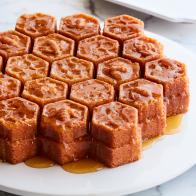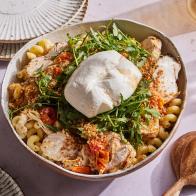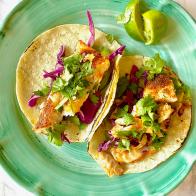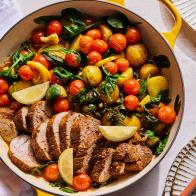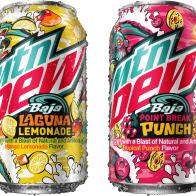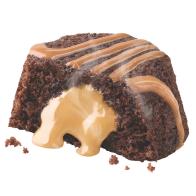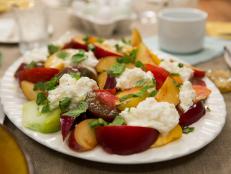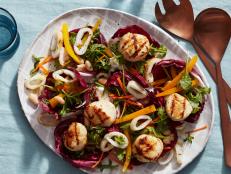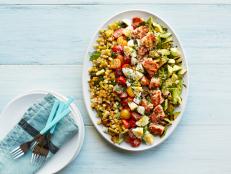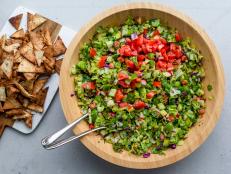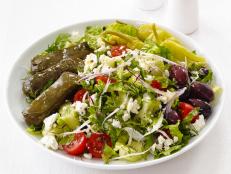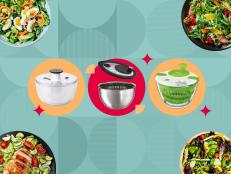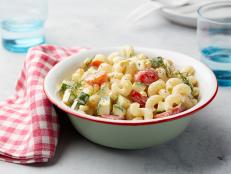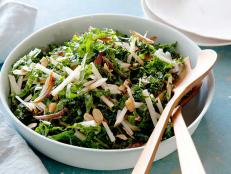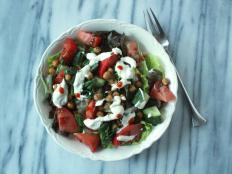Keeping Seasonal Salads Healthy
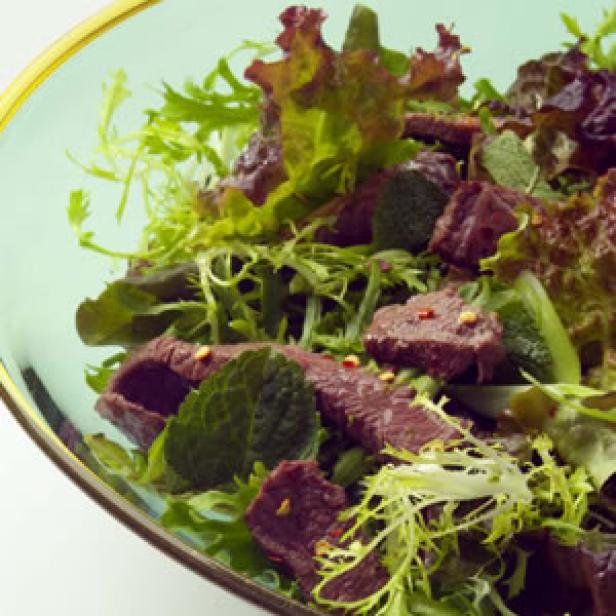
Spring is in the air and fresh produce is hitting your market. What better way to kick-off National Salad Month than with your own seasonal creation? Check out our ideas for preparing your next mixed masterpiece.
Leafy greens are very low in calories and fat, but packed with fiber, antioxidants and other nutrients like folate and vitamin K. They also have the antioxidant lutein, which is good for your peepers. There are so many to choose from -- spinach, endive, mustard greens, frisee, arugula and umpteen lettuce varieties. Keep your eyes open at your farmer’s market -- you may even find specialty goodies like dandelion and beet greens. If you usually stick to spinach, romaine or iceberg lettuce (oh boy), be adventurous. Read up on online (or ask us) to learn what an unusual green pairs well with. Not all greens are best eaten raw, either -- some might be too bitter for you.
Of course, it would be a boring salad if it was just greens. Adding in multi-colored veggies -- tomatoes, beets, cauliflower or carrots -- increase the variety of vitamins and minerals. The more colorful, the better.
If you're an old-school salad fan, you might balk at adding fruits, but strawberries and kiwis can help compliment protein add-ins like turkey or chicken (more on those below). Mandarin oranges help sweeten more bitter greens like radicchio -- they also pair well with crumbly, robust cheeses like Gorgonzola and feta. Dried fruits (raisins, dried cranberries or apricots, especially) are good for just a little sweetened zing.
If you're serving a salad as your main course, you need to balance it with protein. Chicken, turkey, beef, eggs, fish and other seafood are some typical options. Small amounts of cheeses like feta, mozzarella and Parmesan help add flavor -- and some protein -- as well, but go easy (they're fatty).
Beans, peas, lentils and other legumes add extra protein without much fat and cholesterol -- plus, they can help you feel fuller longer. Pasta and grains like quinoa or buckwheat also have protein -- just mind the amounts. Aim for 1/2 cup cooked per serving.
And don’t forget nuts and seeds. Sunflower seeds are my favorite topping. These gems are protein-packed and contain healthy fats. I like the dense crunch they give my mix, but stick to a tablespoon per person.
Here's where most folks pile on the calories and fat. Are you a blue cheese lover? Well, a standard 2-tablespoon serving of that full-fat dressing can add as much as 151 calories and 16 grams of fat to your salad (that's 91% calories from fat). Yikes! And if you order salads in a restaurant, they often come pre-dressed -- or "pre-drenched."
Making your own dressing -- with an olive oil base -- is pretty simple and the smartest choice. Be careful, though; 1 tablespoon of any oil is about 120 calories. Some recipes call for 2 tablespoons of oil per person, which throws an extra 240 calories into the equation. I analyze tons of recipes for Healthy Eats and only a handful of salads meet our nutrition guidelines -- mainly because most dressings call for too much oil. Your best bet is to stick with 1 tablespoon or less of oil per serving. My cohort Dana makes a super simple oil and vinegar dressing. It works well on a basic salad.
Many restaurant and fast-food salads are topped off with these toasted -- or fried -- bread cubes. That doesn't mean you should follow suit. A half-cup of plain croutons runs about 61 calories, and the flavored versions you might find at restaurants and grocery stores can be closer to 100 calories per half-cup. Because the croutons are often just made from plain white flour (and who knows what other additives), you're getting minimal nutrients for those 60-plus calories. If you do go for croutons, you may want to ditch that roll on the side, too.
Salad is a classic "healthy food" but, like I said, the wrong add-ons can quickly make it not-so good. Besides keeping dressing and oil under control, think about which foods give your salad the most flavors, and stick to them. Don't overdo it and mix everything in. You only need a small amount of high-flavored ingredients like cheeses or chicken. As long as you mind your portions, you should be in the clear.
-
Recipes to try:
